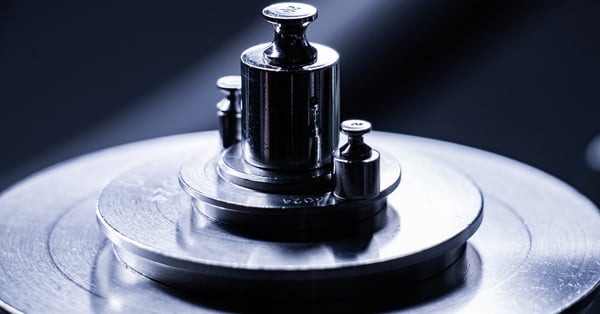Low gauge pressure calibration is one of the more delicate procedures within a calibration lab.
Values are so low that the slightest tremor can cause a wide discrepancy in pressure readings. There are many factors one must consider for a low pressure calibration lab. Some are obvious, while others come from years of experience and problem solving.
Here are five factors that may affect low pressure calibration:1. Vibrations from outside the lab
When calibrating with such small weight sets, a small disturbance can make a big difference when it comes to the uncertainty of measurement. Vibrations from a busy highway, passing train or low-flying plane near your calibration lab can affect readings on a low pressure calibration system. These vibrations often can’t be felt or heard but the deadweight tester and DUT are sensitive enough to show readings out of tolerance due to these instances.
To limit vibrations in a calibration lab, they are sometimes equipped with a separate or reinforced slab foundation from the rest of the building. While many businesses use drop ceilings, a low pressure calibration lab needs solid construction, even for ceilings and walls. The building construction itself can provide the necessary dampening and stability a high accuracy, low pressure calibration requires.
2. Disturbances from the technician
The trick to a high accuracy calibration is creating an environment with the lowest percentage of uncertainty. The challenge this brings is that everything has uncertainty, even the person performing the calibration.
Factors such as body heat from holding a measurement line can cause significant changes in pressure readings. Similarly, not allowing enough air circulation in the lab to maintain a stable temperature can produce an environmental change great enough to influence pressure readings.
A technician working at a calibration desk can also cause vibrations that may seem inconsequential but can cause spikes in pressure readings during a calibration. Typing, tapping, writing and other mannerisms or work tasks are something technicians must be aware of while calibrating low pressure devices and be careful to avoid in case they disturb the calibration system.
3. The number of trim sets and weights
Weights and trim sets are how pressure values are produced in pressure calibration with a deadweight tester. Every individual weight used in a calibration has its own level of uncertainty. To minimize the percentage of uncertainty, it is often a good idea to minimize the number of individual weights that are applied.

It is of utmost importance to stay within tolerance. Once a technician produces a pressure value within tolerance of a test point, a calibration may have a lower uncertainty percentage at that value even if a value closer to the test point can be produced with additional trim sets. This is one reason tolerance ranges exist: to minimize uncertainty while still performing calibrations with extremely high accuracy.
4. Instrument temperature
Similar to how the living, breathing technician dispels heat as they work, a motorized piston also gives off heat. In a high pressure calibration, not enough heat is produced to throw pressure readings out of tolerance. However, for low pressure calibration, these same temperatures can have a significant impact on the reading.
To maintain a stable weight on a deadweight tester, the deadweight spins on a piston. While some pistons have motors to spin weights, it’s not always a good idea to use these motors. As the motor spins the piston, it produces heat, which alters the pressure within the bell jar of the calibrator.
To remedy this, an experienced technician will likely spin the weights manually on the piston, allowing them to spin freely once the bell jar is placed. This evenly distributes a steady weight for stable pressure readings, while maintaining a reliable environment.
5. Too much climate control
For a lab to maintain its certifications, climate control is required. The humidity, temperature and other environmental parameters are listed on every calibration certificate. Calibration labs have some of the most controlled environments. Maintaining this control while still allowing enough flexibility in the environment so changes don’t have too great an influence on pressure readings is a delicate balance.
Low pressure calibration labs are often equipped with dampeners on the air vents and humidity control to keep the environment within compliance. Direct air flow on the deadweight tester or DUT can cause sudden changes in pressure. Even the air kicking off can cause sudden spikes throughout the system. Closing the lab off altogether can also affect pressure as the temperature rises due to outside conditions and heat within the lab from people, instruments and computers. Another concern of a completely sealed environment is that it may cause pressure values to jump and spike at the slightest disturbance. By maintaining some flexibility in the ambient environment, a deadweight tester can perform more dependably as changes have less effect on pressure readings.
Conclusion
Mensor’s calibration lab has decades of experience maintaining A2LA, ISO/IEC and ANSI/NCSL accreditation. With this experience comes the knowledge and wisdom to create the ideal environment to perform calibrations on any pressure instrument, regardless of its accuracy rating or range.
Related Reading:


